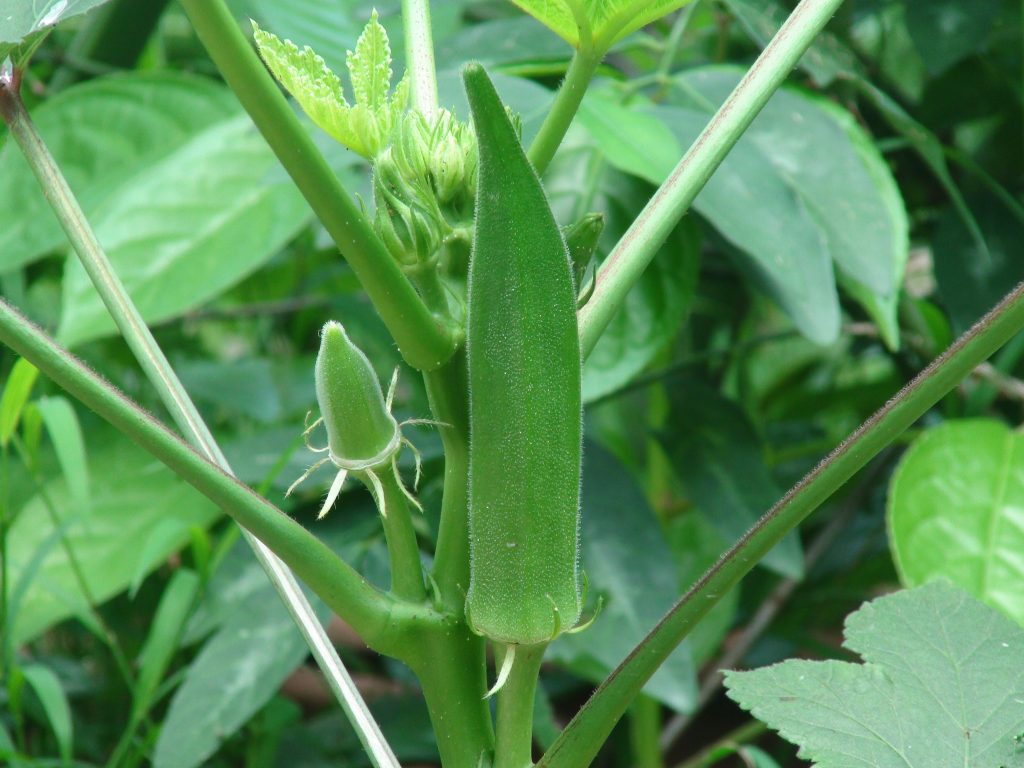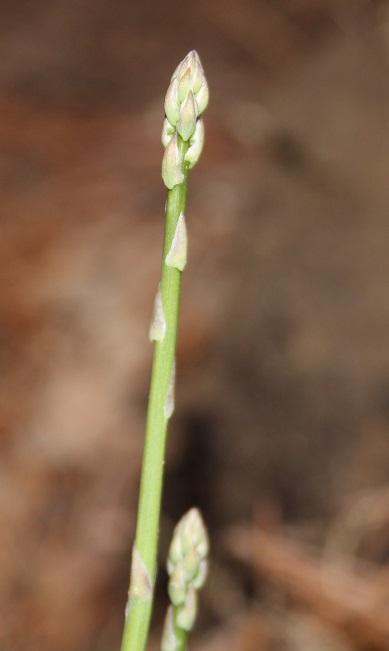Okra Gardening
Okra, Abelmoschus esculentus, is a herbaceous annual plant from the mallow family, Malvaceae, and is cultivated for its edible seed pods. It’s widely grown in most tropical regions of the world. Plants can grow up to 1.2 to 1.8 meters and typically survive only one growing season. It bears heart-shaped lobed leaves, and yellow flowers with a crimson center. You need to know that when okra gardening, this heat-loving vegetable crop grows through the warm season, coming to harvest by the end of summer. The fruit is picked and consumed while it’s young and unripe. Mature seed pods are tough for consumption.
Types & Varieties of Okra
Okra is rich in minerals, vitamins, antioxidants and fibers and low on calories, making it an excellent addition to your diet. Plenty of varieties are available, distinguished with their length of growing season, size of the plant and appearance and taste of the fruits. ‘Spineless’ varieties also exist that lack the tiny spines on the seed pods that irritate your skin upon handling.
Common varieties of Okra:
Annie Oakley II – The plant grows to about 4 feet tall, maturing in about 52 days and bears spineless seed pods.
Clemson Spineless – These are the most popular varieties in markets and produce 4-feet tall plants, with a spread of about 48 inches. The variety matures in 55 to 60 days, giving ‘spineless’ fruit that can grow to 9 inches in length.
Park’s Candelabra Branching – It’s a base-branching variety for easier harvest.
Cajun Delight – It’s a good choice for gardeners with shorter growing seasons since it takes only 50 to 55 days to mature. The plant reaches to about 4 feet tall, giving 3 to 5 inch long dark green seed pods for harvest.
In the ideal conditions, a single okra plant can yield 20 to 30 or even more seed pods. If you’re growing a self-sufficient garden, plan to grow 3 to 3 okra plants per person.
Temperature and Timing for growing Okra
Okra is a warm-season crop that’s planted 2 to 3 weeks after all the dangers of frost have passed in the region and the soil temperature is at least 60°F. The ideal growing temperatures range from 75°F to 90°F.
Sun Exposure and Soil Requirements
Okra grows best with full sun exposure for at least 8 hours a day. Plant it in fertile, well-drained soil that’s slightly on the acidic side, with soil pH between 5.8 and 7.0.
How to Plant Okra
Okra gardening begins when you start seeds indoors in peat pots 3 to 4 weeks before the last spring frost. Grow the seedlings under grow lights until they are ready to go in the garden 5 to 6 weeks later. Seedlings should be hardened off before transplanting them in the garden. Space the transplants 1 to 2 feet apart for optimal development.
Alternatively, you can start the seeds directly in the garden 2 to 3 weeks after all the dangers of frost have passed. Plant the okra seeds ½ to 1 inch deep in the ground, spacing them a foot apart in rows. Space the rows 3 to 4 feet apart to give ample room to the plants to grow. You can also plant the seeds closer together and then thin them once seedlings emerge.
Keep the planting bed well-weeded while the plants are still young and apply 2 to 3 inches of mulch around them to suppress weeds. Offer the plants 1 inch of water per week or more if you live in a very hot region. Side-dress the plants with aged compost every 3 to 4 weeks for best results.
Harvest
After a successful okra garden growing season, you can look forward to a hefty harvest. Here’s how to harvest okra:

- Okra is ready to harvest in 2 months after planting the seeds.
- Harvest the seed pods while they’re still young and tender. They should ideally be around 2 to 3 inches long for best texture.
- Wear gloves when harvesting okra because most varieties have spines that may irritate the skin. Spineless varieties may be harvested without gloves.
- Continue harvesting the pods every other day to boost further fruiting.
- Cut the stem just above the pod with a sharp knife to harvest the okras. If the stem is too hard, the okra has matured beyond what’s suitable for consumption. Remove it from the plant and toss it.
- Remove the lower leaves after the first harvest to speed up production of further seed pods.
Storing
Okra lasts only 2 to 3 days in the refrigerator. Wrap unwashed okra in paper towels or place them in a paper bag before storing in the fridge.
If you want to store for longer, transfer okras without cutting or cooking to freezer bags and place them in the freezer. When stored in the freezer in this way, they can last for up to a year. You can continue using them as needed through the winter months.
Pests and Diseases
Pests
- Aphids are a common problem with okra plants and can be avoided by growing tolerant varieties. If the infestation is heavy, insecticidal soaps or horticultural oils are a good way to control it.
- Corn earworms can infest the plants, causing damage to the leaves, buds, flowers and pods. Bacillus thuringiensis can help control these insects naturally.
- Cucumber beetles may also affect okra plants, damaging the leaves and stems, leaving the plants susceptible to bacterial wilt. Adult beetles also feed on the fruit, leaving behind unsightly scars. Kaolin clay can manage smaller infestations, while you’ll need to use insecticides if the infestation is heavy.
Diseases
- Powdery mildew often affects okra plants, causing the leaves to roll upwards and give a scorched appearance. Application of suitable fungicides can control the problem, especially in its early stages.
- Yellow vein mosaic disease is a common viral disease that infects the okra plants and is identified by yellow and green alternating patches on the infected leaves. Fruits are also yellowish and smaller in size. Plant resistant varieties and keep the field weed-free. Once the plant is infected, it will have to be removed to prevent the disease from spreading to the neighboring plants.
Hopefully, with all the things you’ve learned in this article, you can start the perfect okra gardening season and enjoy loads of fresh harvests.
